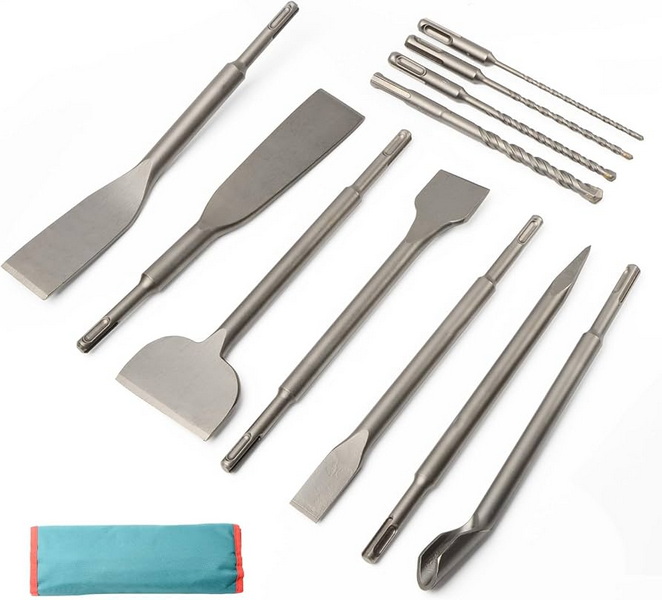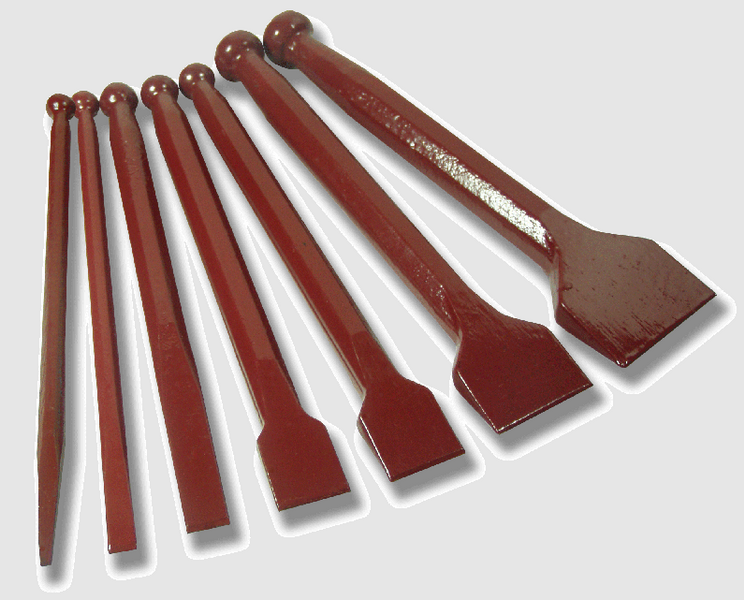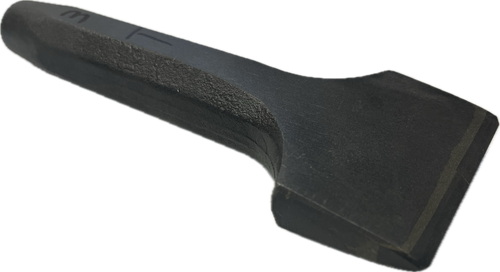Content Menu
● Understanding Carbide Tipped Stone Chisels
>> Benefits of Carbide Tipped Chisels
>> Types of Carbide Tipped Chisels
● Types of Stone and Compatibility
>> 1. Soft Stones
>>> Working with Soft Stones
>> 2. Medium Hardness Stones
>>> Techniques for Medium Hardness Stones
>> 3. Hard Stones
>>> Best Practices for Hard Stones
>> 4. Very Hard Stones
>>> Specialized Tools for Very Hard Stones
● How to Use Carbide Tipped Stone Chisels Effectively
>> Safety Precautions
● Common Applications of Carbide Tipped Stone Chisels
>> 1. Masonry Work
>> 2. Stone Carving
>>> Case Study: A Sculptor's Experience
>> 3. Restoration Projects
>>> Example: Restoring Historical Monuments
● Maintenance Tips for Carbide Tipped Stone Chisels
● Conclusion
● Frequently Asked Questions
>> 1. What is the main advantage of using carbide tipped stone chisels over traditional steel chisels?
>> 2. Can I use carbide tipped chisels on soft stones?
>> 3. Are there specific carbide grades for different types of stones?
>> 4. How do I maintain my carbide tipped chisels?
>> 5. Can I sharpen carbide tipped chisels?
Carbide tipped stone chisels have revolutionized the stone carving and masonry industries, providing artisans with tools that offer durability and efficiency. These chisels are specifically designed to handle various types of stone, but the question remains: can they be used on all types of stone? This article delves into the characteristics of carbide tipped stone chisels, their applications, and the types of stone they can effectively work with.

Understanding Carbide Tipped Stone Chisels
Carbide tipped stone chisels are crafted with a tungsten carbide tip that is fused to a steel body. This combination results in a tool that is not only hard but also resistant to wear and tear. The carbide tip maintains its sharpness longer than traditional steel, allowing for more extended use without frequent sharpening.
Benefits of Carbide Tipped Chisels
- Durability: The carbide tips resist chipping and wear, making them suitable for heavy-duty applications.
- Efficiency: They can cut through harder materials like granite and quartzite with ease.
- Versatility: Available in various shapes and sizes, these chisels can be used for different tasks, from rough shaping to fine detailing.
Types of Carbide Tipped Chisels
Carbide tipped chisels come in various shapes and sizes to accommodate different tasks:
- Flat Chisels: Ideal for removing large amounts of material quickly. They are often used for rough shaping.
- Pointed Chisels: Perfect for detailed work and intricate designs. They allow for precision carving.
- Bull Nose Chisels: These are great for creating rounded edges or grooves in stone.
- Tapered Chisels: Useful for accessing tight spaces and making fine adjustments.
Types of Stone and Compatibility
1. Soft Stones
Soft stones like limestone and soapstone can be worked with traditional steel chisels; however, carbide tipped chisels can also be used. They allow for quicker material removal and finer detailing without the risk of damaging the stone.
Working with Soft Stones
When working with soft stones, the key is to control the pressure applied to the chisel. Carbide tipped chisels can remove material rapidly, so it's essential to maintain a steady hand to avoid over-carving. Additionally, using a chisel with a broader tip can help create smoother surfaces.
2. Medium Hardness Stones
Stones such as marble and travertine fall into the medium hardness category. Carbide tipped chisels excel in this area, providing clean cuts and reducing the likelihood of chipping or cracking.
Techniques for Medium Hardness Stones
For medium hardness stones, it's advisable to use a combination of carbide tipped chisels in different shapes. Flat chisels can be used for broad cuts, while pointed chisels are ideal for intricate details. Always start with a roughing chisel to establish your shape before switching to finer chisels for detailing.
3. Hard Stones
When it comes to hard stones like granite, basalt, and quartzite, carbide tipped chisels are essential. The toughness of these materials requires tools that can withstand significant pressure without dulling.
Best Practices for Hard Stones
Using carbide tipped chisels on hard stones involves specific techniques:
- Pre-drilling: For particularly tough materials, pre-drilling holes can help guide your chisel.
- Cooling: Using water or other cooling methods can prevent overheating during prolonged use.
- Angle Control: Maintaining the right angle is crucial; typically, a 30-degree angle is effective for most hard stones.
4. Very Hard Stones
For extremely hard stones like diamond or certain types of volcanic rock, specialized carbide tipped chisels may be necessary. These tools often feature enhanced carbide grades designed specifically for such demanding materials.
Specialized Tools for Very Hard Stones
When working with very hard stones, consider investing in chisels designed specifically for those materials. These chisels often have reinforced tips and may even feature coatings that enhance their cutting ability.
How to Use Carbide Tipped Stone Chisels Effectively
Using carbide tipped stone chisels requires a good understanding of technique to maximize their potential:
1. Select the Right Chisel: Choose a chisel based on the type of stone you are working with.
2. Proper Angle: Maintain an appropriate angle when striking the chisel to ensure efficient cutting.
3. Controlled Pressure: Apply consistent pressure; too much force can lead to chipping.
4. Regular Maintenance: Although carbide tips require less frequent sharpening, they should still be checked regularly for wear.

Safety Precautions
When using carbide tipped stone chisels, safety should always be a priority:
- Wear Protective Gear: Safety goggles and gloves are essential to protect against flying debris.
- Work in a Well-Ventilated Area: Dust from stonework can be harmful if inhaled.
- Secure Your Workpiece: Ensure that your stone is securely fastened to prevent movement while working.
Common Applications of Carbide Tipped Stone Chisels
Carbide tipped stone chisels are used in various applications across different fields:
1. Masonry Work
In masonry, these chisels are invaluable for shaping bricks and stones during construction projects. They allow masons to create precise cuts that fit together seamlessly.
2. Stone Carving
Artists use carbide tipped chisels for detailed stone carving projects. The ability to achieve fine details makes them ideal for sculptures and decorative elements.
Case Study: A Sculptor's Experience
One renowned sculptor shared how switching from traditional steel tools to carbide tipped chisels transformed his work process. He noted that he could achieve finer details in shorter time frames due to the efficiency of the carbide tips. His sculptures now feature intricate designs that were previously challenging to execute with standard tools.
3. Restoration Projects
During restoration work on historical buildings or monuments, carbide tipped chisels help artisans carefully remove damaged sections without compromising surrounding areas.
Example: Restoring Historical Monuments
In restoring historical monuments made from soft limestone, craftsmen often face challenges due to weathering and erosion. Using carbide tipped chisels allows them to delicately remove layers of damaged stone while preserving the original structure's integrity.
Maintenance Tips for Carbide Tipped Stone Chisels
To ensure longevity and optimal performance from your carbide tipped stone chisels, follow these maintenance tips:
1. Cleaning After Use: Always clean your chisels after each use to remove dust and debris that could cause corrosion or dulling.
2. Storage: Store your chisels in a dry place away from moisture. Consider using protective cases or sheaths to prevent accidental damage.
3. Inspect Regularly: Check your tools regularly for chips or cracks in the carbide tip; replace any damaged tools immediately.
4. Sharpening Techniques: If sharpening is needed, use specialized diamond files or grinders designed specifically for carbide materials.
Conclusion
In conclusion, carbide tipped stone chisels are versatile tools that can be effectively used on a wide variety of stones ranging from soft to extremely hard materials. Their durability and efficiency make them a preferred choice among professionals in the masonry and stone carving fields. While they excel in harder stones, they can also enhance productivity when working with softer stones.
As you consider incorporating carbide tipped chisels into your toolkit, remember to select the appropriate type based on your specific needs and the characteristics of the stone you are working with.

Frequently Asked Questions
1. What is the main advantage of using carbide tipped stone chisels over traditional steel chisels?
Carbide tipped stone chisels maintain their sharpness longer than traditional steel chisels, allowing for more extended use without frequent sharpening.
2. Can I use carbide tipped chisels on soft stones?
Yes, while traditional steel chisels are typically sufficient for soft stones, carbide tipped chisels can provide enhanced efficiency and reduce wear on the tool.
3. Are there specific carbide grades for different types of stones?
Yes, various grades of carbide are designed to handle different conditions and types of stone effectively.
4. How do I maintain my carbide tipped chisels?
Regularly inspect your chisels for wear, clean them after use, and avoid excessive force during cutting to prolong their lifespan.
5. Can I sharpen carbide tipped chisels?
While they require less frequent sharpening than steel chisels, if necessary, they can be sharpened using specialized equipment designed for carbide materials.
















